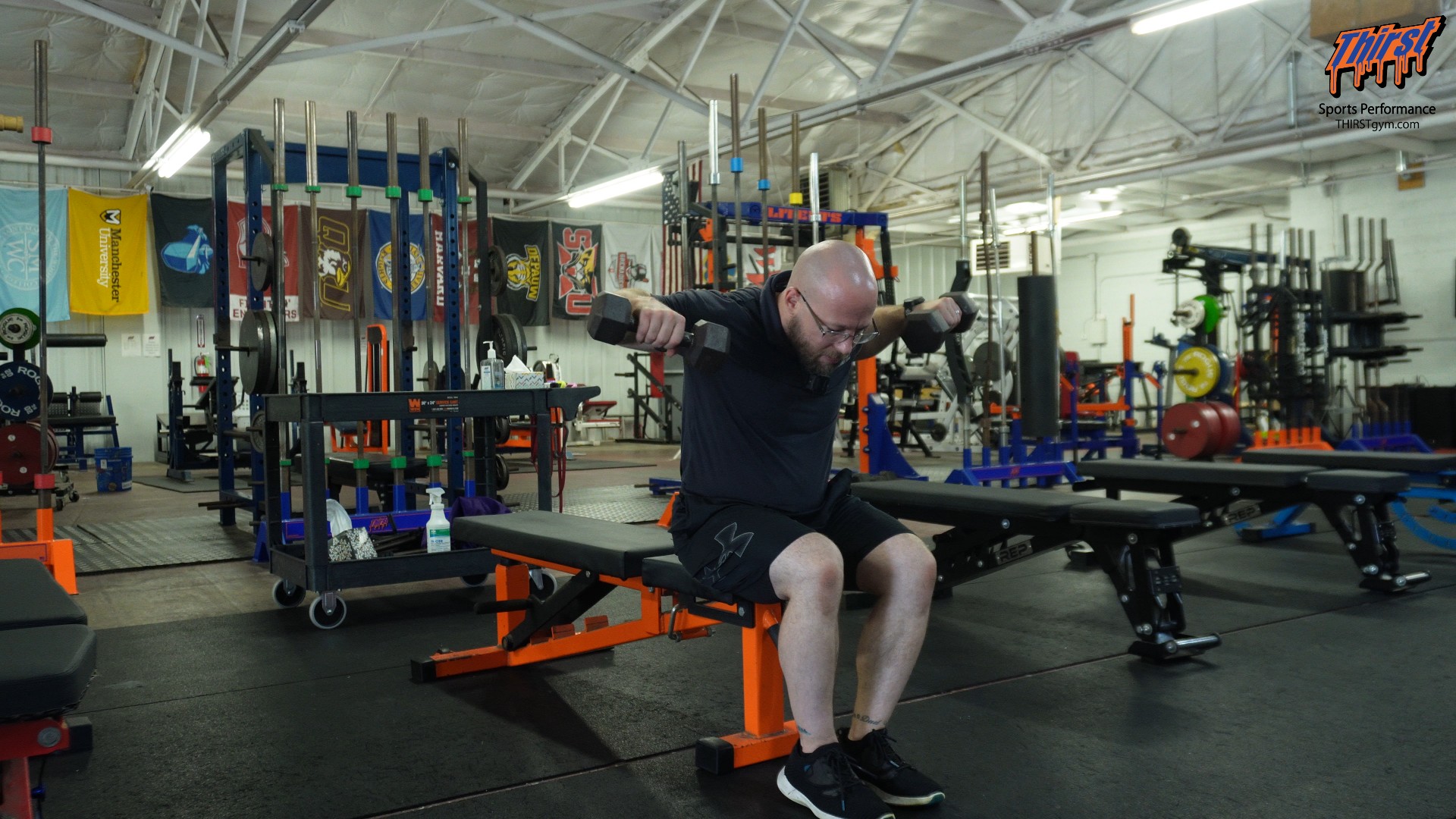The Ultimate Smitley Shrug: A Revolutionary Upper Back and Shoulder Exercise
If you’re searching for a powerful compound exercise that can transform your upper back development, the Smitley Shrug might be exactly what your workout routine has been missing. This innovative exercise combines three essential upper body movements into one comprehensive exercise that targets multiple muscle groups simultaneously, making it an incredibly efficient addition to any strength training program.
Watch the video below on how to maximize this exercise.
What Is the Smitley Shrug?
The Smitley Shrug is a unique compound exercise that masterfully blends three fundamental upper back and shoulder movements: the rear deltoid raise, the face pull, and the traditional shrug. Created as an innovative solution for lifters seeking maximum upper back development, this exercise allows you to use significantly heavier weights than you would typically handle with isolated rear delt or face pull exercises.
Think of the Smitley Shrug as the Swiss Army knife of upper back exercises. Just as that versatile tool combines multiple functions into one compact design, this exercise consolidates several targeted movements into a single, highly effective motion pattern. The result is an exercise that delivers exceptional muscle-building potential while maximizing your training efficiency.
Essential Equipment and Setup
Getting started with the Smitley Shrug requires minimal equipment, making it accessible for both home and gym workouts. You’ll need a standard utility bench that allows you to sit comfortably, though a sturdy chair can serve as an acceptable alternative if necessary. Additionally, you’ll need a pair of dumbbells, and here’s where this exercise truly shines: you can use considerably heavier weights than you’d typically select for isolation exercises targeting the same muscle groups.
The beauty of this setup lies in its simplicity. Unlike complex exercises requiring specialized equipment or elaborate configurations, the Smitley Shrug can be performed in virtually any training environment with basic equipment that most lifters already have access to.
Target Muscles and Benefits
The Smitley Shrug is designed to “put slabs of meat on the upper back,” as the exercise’s creator puts it. This compound movement primarily targets the upper trapezius muscles, rear deltoids, and the muscles responsible for scapular retraction. By combining these movement patterns, you’re simultaneously building strength and size across the entire posterior chain of your upper body.
The exercise’s unique design allows for significant muscle activation through multiple planes of motion. When you perform the rear delt raise component, you’re targeting the posterior deltoids. The face pull motion engages the middle trapezius and rhomboids, while the shrugging component activates the upper trapezius. This comprehensive muscle recruitment makes the Smitley Shrug exceptionally effective for developing overall upper back thickness and strength.
Step-by-Step Exercise Execution
Understanding proper form is crucial for maximizing the benefits of the Smitley Shrug while minimizing injury risk. Begin by positioning yourself in a seated, bent-over position similar to what you’d use for seated rear delt raises. Your arms should be extended with a slight bend in your elbows, holding the dumbbells with a neutral grip.
The movement begins like a traditional rear delt raise, lifting the weights out to your sides. However, instead of simply lowering the weights back down, you’ll bend your elbows and pull the dumbbells up around your face, similar to performing a face pull. Simultaneously, you’ll shrug your shoulders upward while squeezing your shoulder blades together.
This exercise does require some body English, meaning your torso will move slightly throughout the range of motion. This controlled momentum is not only acceptable but necessary for handling the heavier weights that make this exercise so effective. The key is maintaining control throughout the entire movement while allowing for natural body movement that supports the exercise’s compound nature.
Programming and Repetition Recommendations
The Smitley Shrug responds exceptionally well to higher repetition ranges, typically programmed for 2-4 sets of 15-25 repetitions. This high-rep approach maximizes time under tension, which is crucial for the muscle-building benefits this exercise provides. While lower repetition ranges are possible, the real magic happens when you emphasize volume and time under tension.
The eccentric portion of the movement—the controlled lowering phase—is particularly important for muscle development. Focus on controlling the weight as you lower it, creating a brief pause at the bottom position before explosively driving the weight back up through the compound movement pattern. This yielding and stopping of the dumbbells creates significant muscle tension and contributes to the exercise’s effectiveness.
Why the Smitley Shrug Works
The effectiveness of the Smitley Shrug lies in its ability to overload multiple muscle groups simultaneously with heavier weights than traditional isolation exercises allow. When you can use 40-pound dumbbells for this compound movement versus 15-pound dumbbells for isolated rear delt raises, the potential for muscle growth increases dramatically.
Additionally, the exercise’s compound nature means you’re training movement patterns rather than just individual muscles. This approach better translates to functional strength and real-world applications while providing a more efficient training stimulus.
Conclusion
The Smitley Shrug represents an innovative approach to upper back training that combines the benefits of multiple exercises into one highly effective movement. Whether you’re a seasoned lifter looking to break through plateaus or someone seeking to maximize training efficiency, this exercise deserves consideration in your upper body workout routine. Its unique combination of muscle targets, heavy loading potential, and time-efficient design makes it a valuable addition to any serious strength training program.








